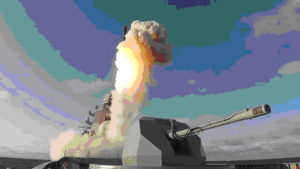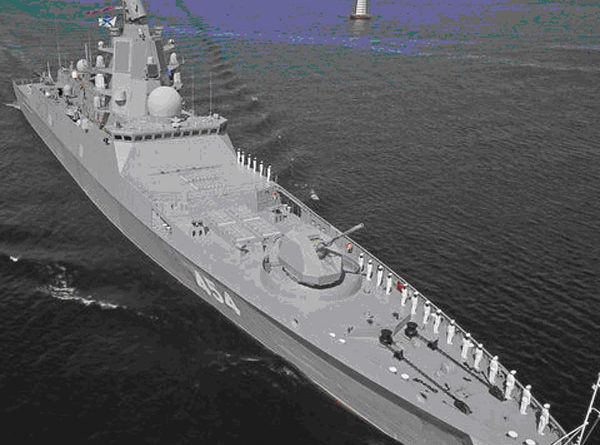Russia Just Tested Its Hypersonic Anti-Ship Missile
Mar 1, 2020
- Russian state media has announced the first test of the Zircon hypersonic missile.
- Zircon is a ship-launched anti-ship and land attack missile system.
- Zircon travels at Mach 9, giving defenders little time to react.
- Zircon will put some teeth in the Russian Navy’s aging fleet.
Russia has tested its new Zircon hypersonic missile. Zircon is designed to attack ships at sea and targets on land at speeds of up to Mach 9, giving enemy missile defenses little time to prepare. The new missile will breathe new life into the Russian Navy, many of whose ships were built before the end of the Cold War.
The test, according to Naval News, took place in the Barents Sea in January. The missile was fired from the Russian Navy frigate Admiral Gorshkov (above). The missile reportedly struck a target on land. There have reportedly been five previous tests of the missile but were likely tests of key components, such as the engine and missile body. The January test was the first all-up test of the actual hypersonic weapon.
The test was originally announced by TASS, a Russian state media source. Another test is anticipated later this year, from the Russian Navy’s new submarine K-561 Kazan.your whole yard with just a push
Zircon is designed to use speed to penetrate enemy air defense systems. Depending on the missile’s flight profile a U.S. Navy carrier battle group defended by the Aegis Combat System would have between two minutes and 20 seconds to detect, track, and shoot down the missile. The missile will be armed with a conventional or nuclear warhead.
Zircon has been in development for several years, and its existence was confirmed in February 2019 by Russian President Vladimir Putin. Putin stated the missile was capable of Mach 9 flight and had a range of 1,000 kilometers (620 miles). In this latest test Zircon’s flight reportedly exceed 500 kilometers (310 miles).

Gorshkov launching a Kalibr land attack cruise missile during an exercise, 2019. Kalibr and Zircon will share parts to reduce costs.
There are not many more details regarding Zircon. According to Putin the missile shares some parts with the subsonic Kalibr land attack cruise missile as a cost-saving measure. Putin also said Zircon would be carried both by surface warships and submarines.
One such submarine is the Project 949A sub Irkutsk. Irkutsk is a guided-missile submarine designed to attack U.S. Navy aircraft carriers with heavyweight anti-ship cruise missiles. Commissioned in 1988, it is currently being upgraded and is scheduled to receive Zircon missiles in exchange for its obsolete older missile loadout. Much of Russia’s naval fleet is antiquated and the deployment of Zircon on these older ships, much like Irkutsk, will give them a considerable makeover in terms of offensive weapons.
According to the head of Russia’s United Shipbuilding Corporation it will be possible to deploy Zircon on all future Russian Navy warships.
Source: Naval News
Courtesy: Popular Mechanics

